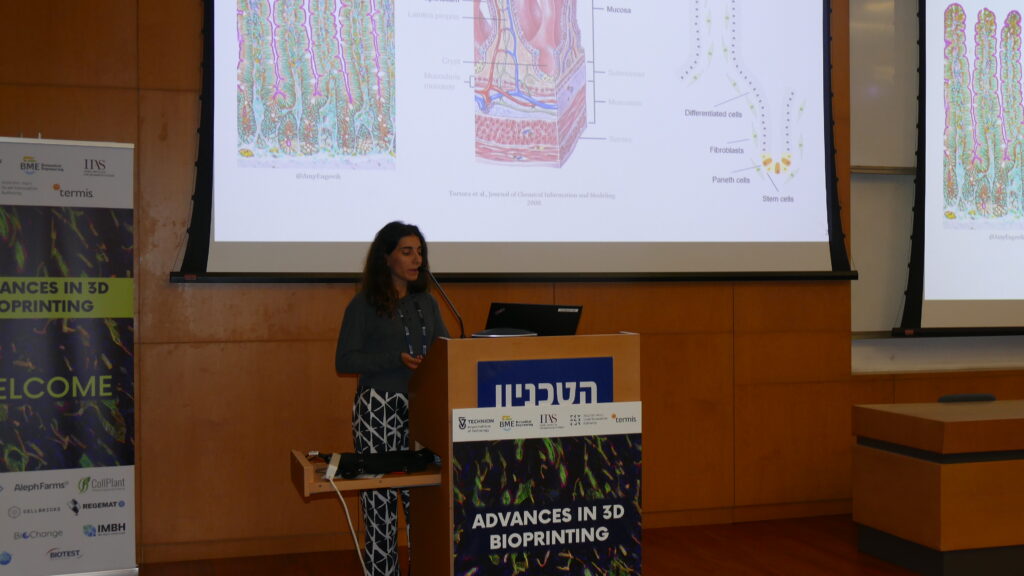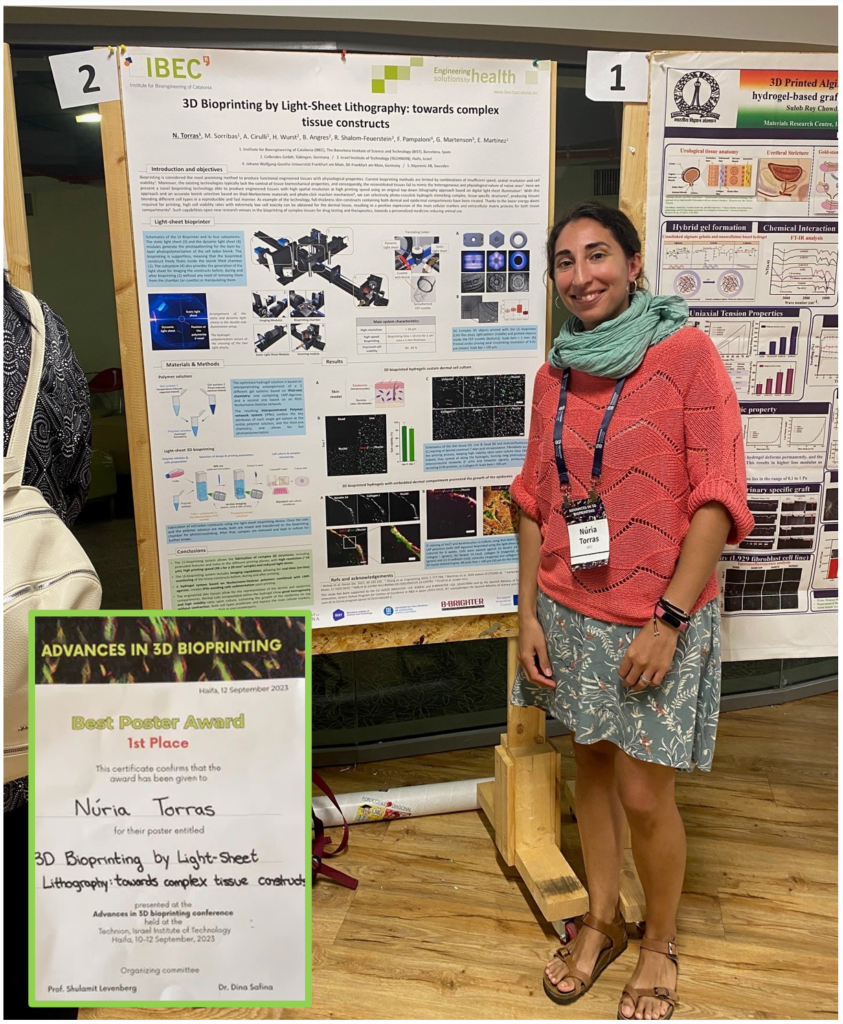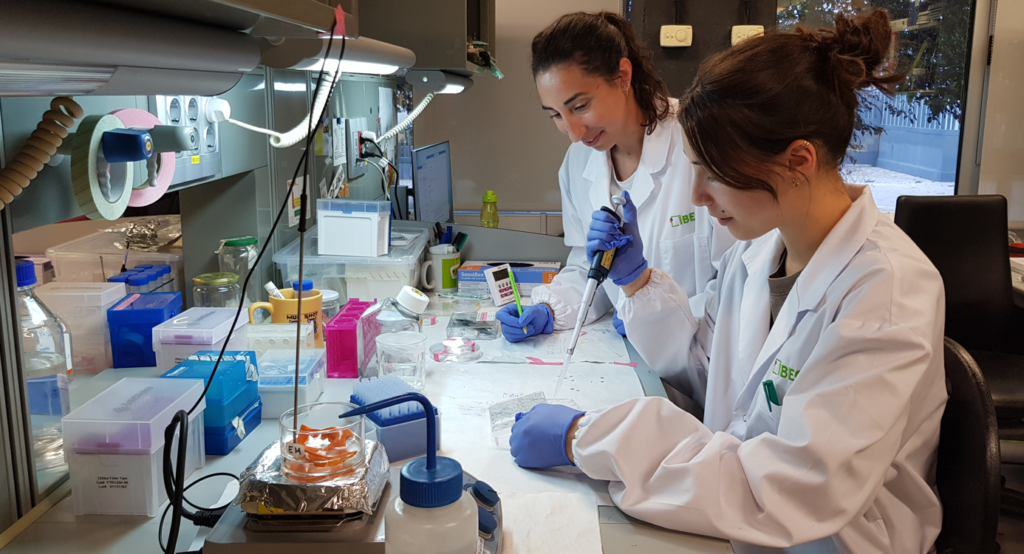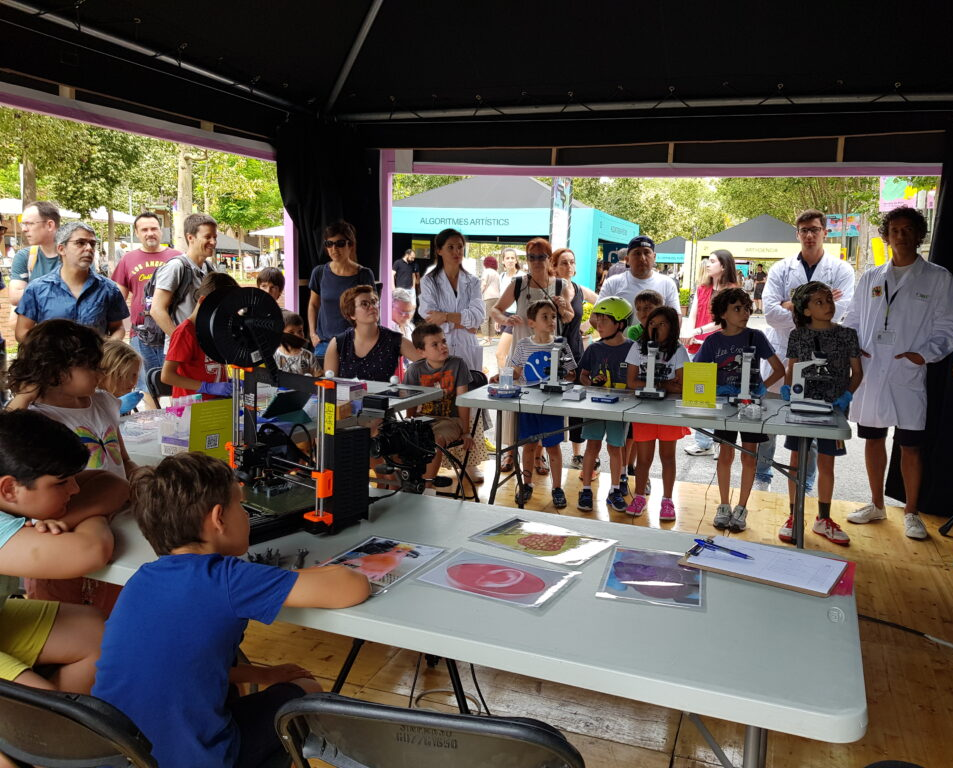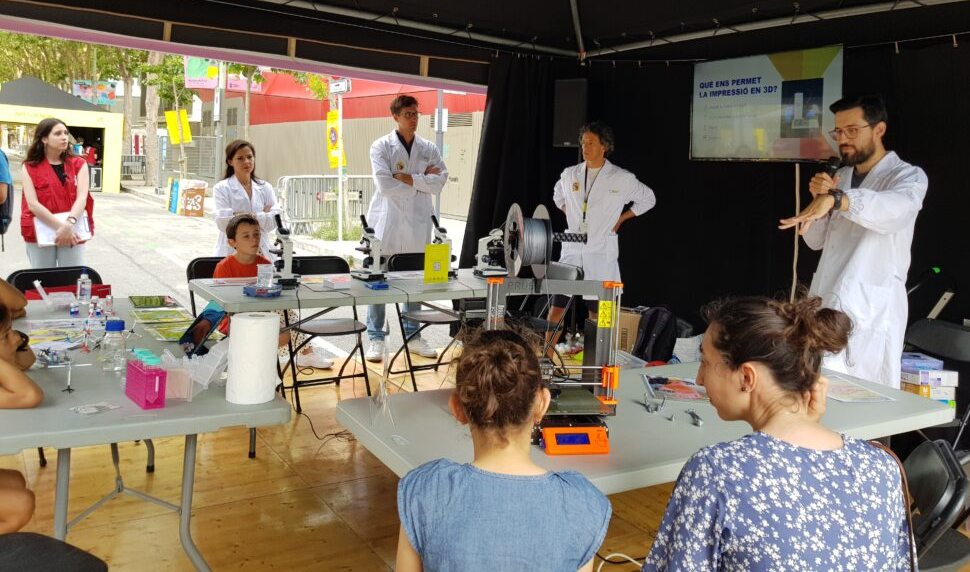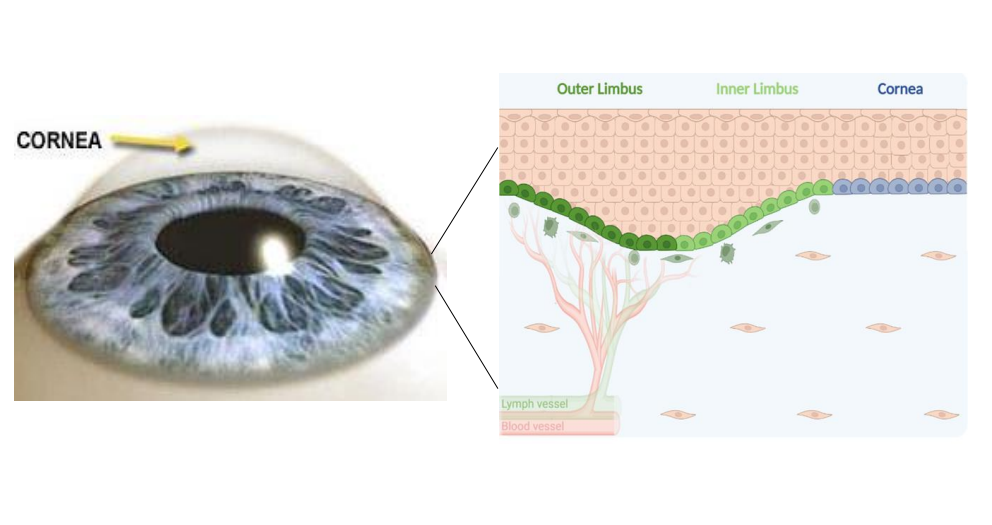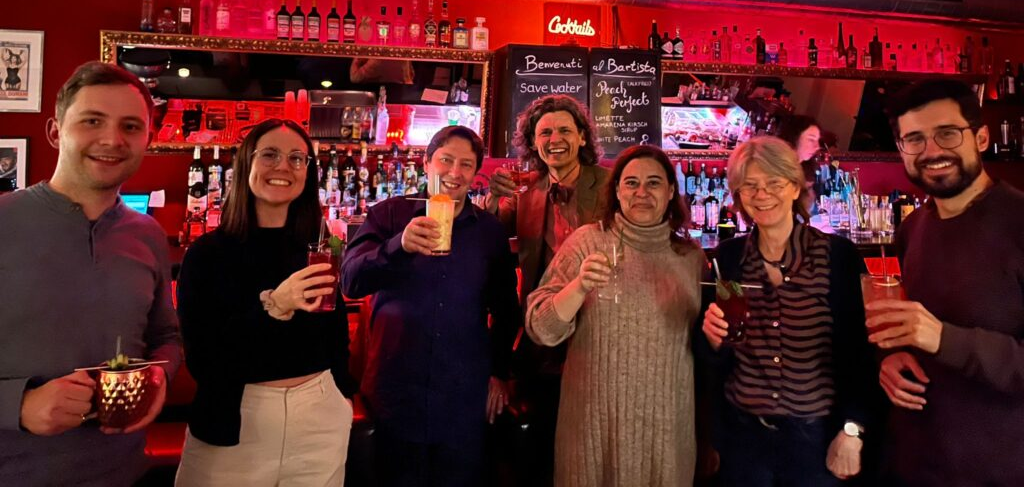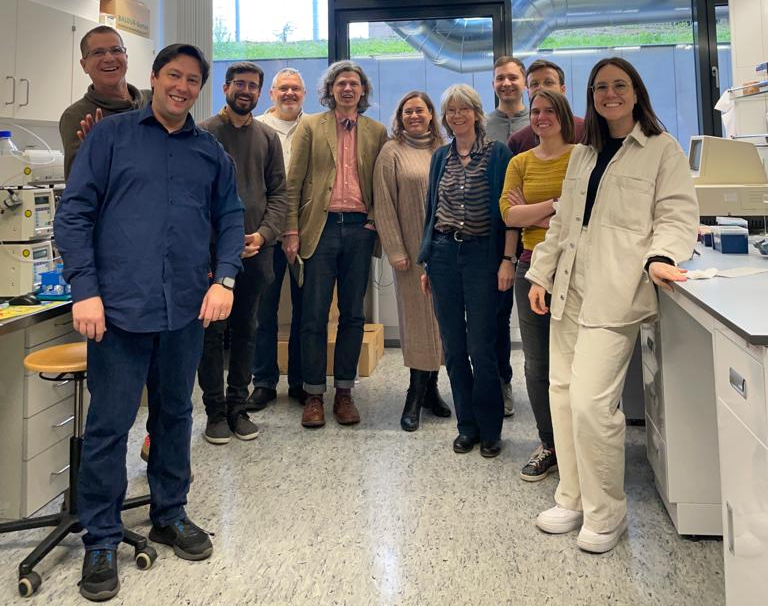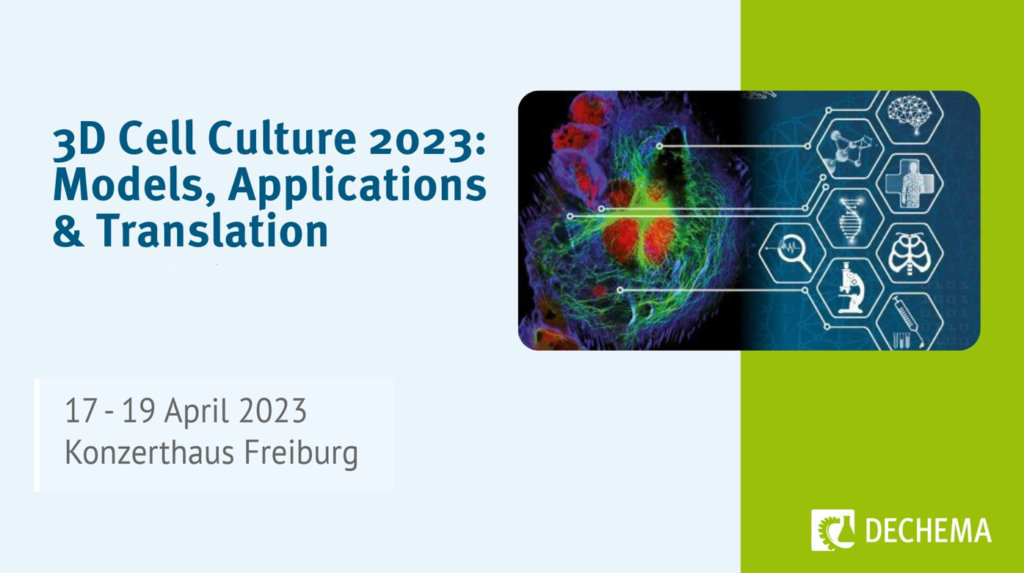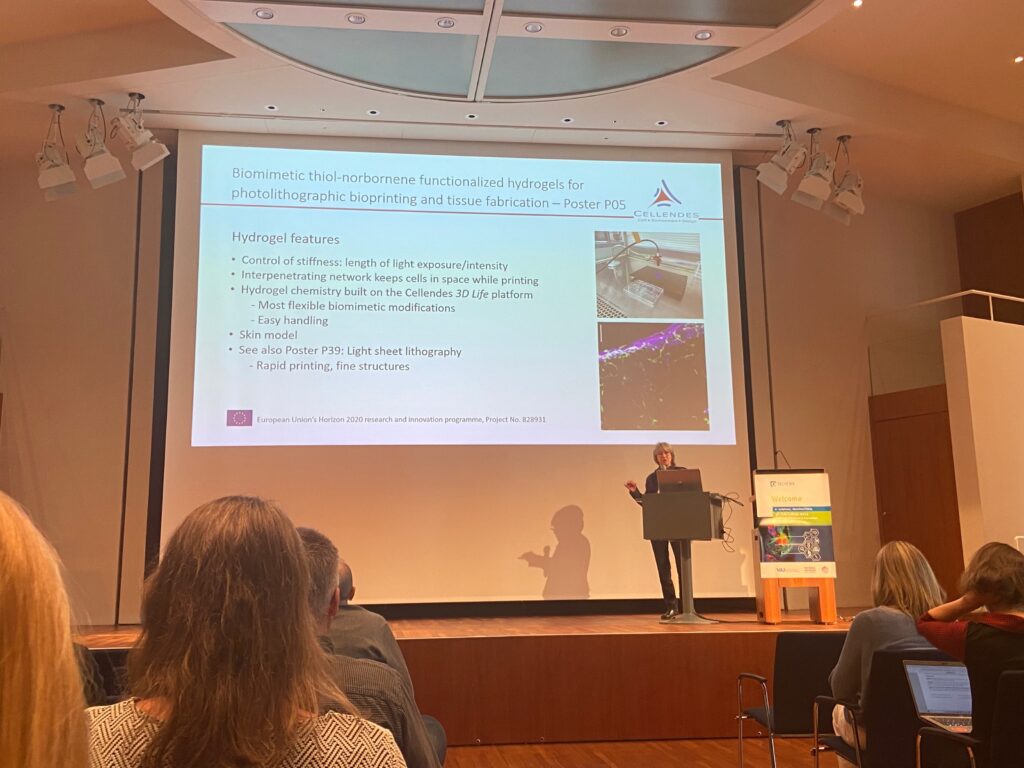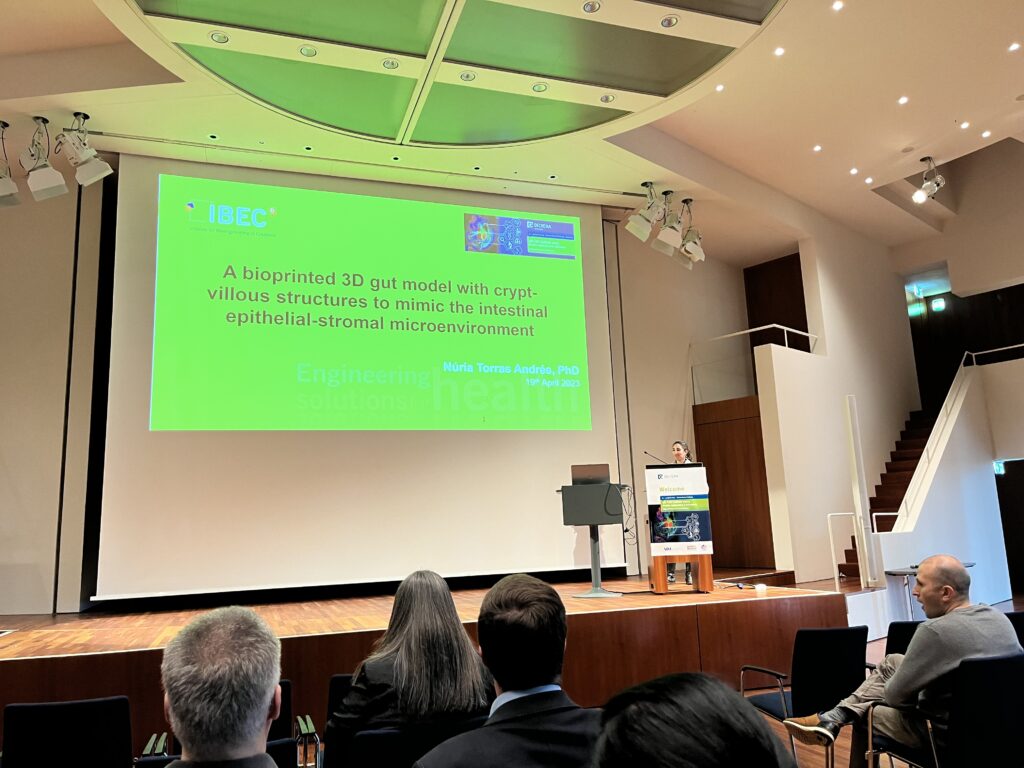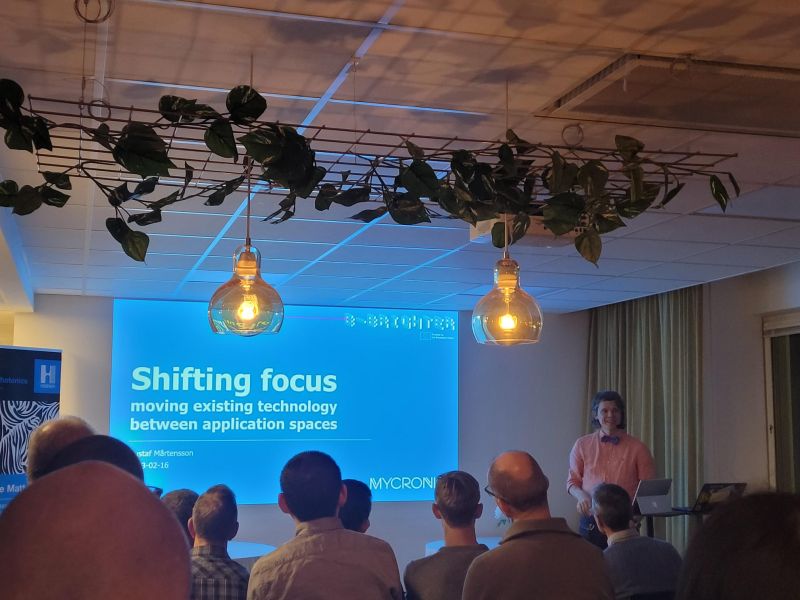The “Advances in 3D Bioprinting” conference, focused on the latest advancements in bioprinting methods and applications, counted with the presence of several B-BRIGHTER researchers from the Institute for Bioengineering of Catalonia (IBEC), who presented the last developments of the project.
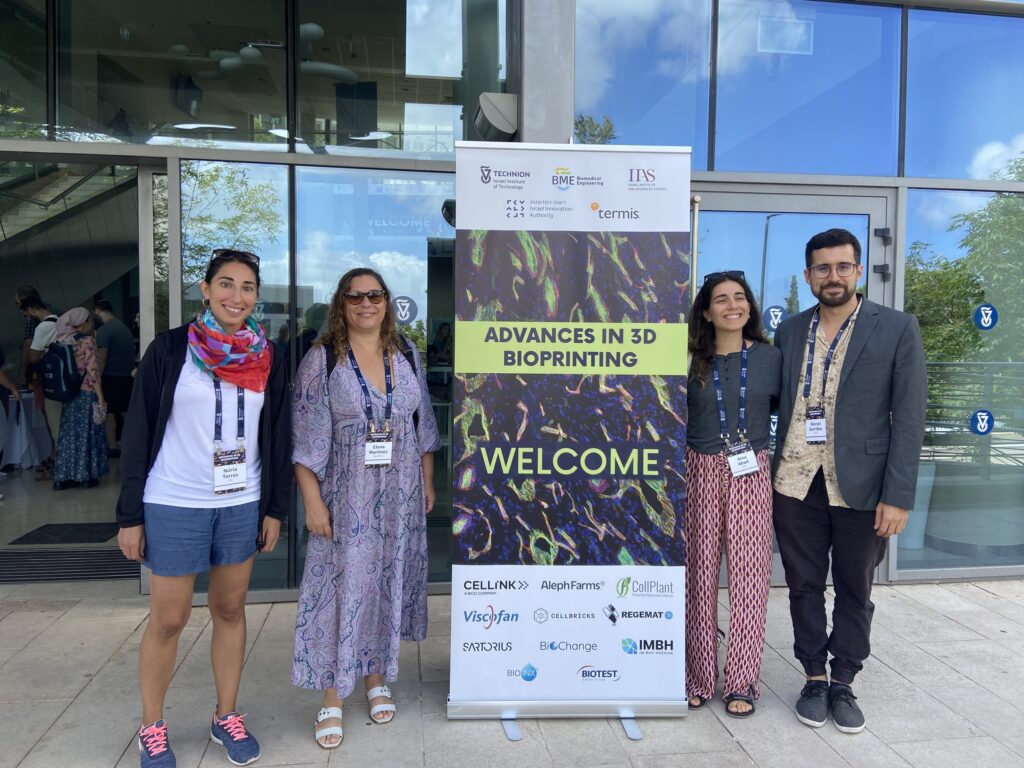
From 10-12 September, lead international experts in 3D Bioprinting came together at Technion, Israel, to share their experience in various exciting topics in this field, including in situ bioprinting, bioprinting for organ-on-a-chip devices, organoid bioprinting, and bioprinting of vascularized composite tissues. B-BRIGHTER researchers from IBEC had the opportunity to present the latest advances of the project and in a very rich and fruitful scientific environment.
Elena Martínez was invited to give the talk “Development of biomimetic models of intestine tissue: guiding cellular self-organization through biofabrication technology”, where she emphasized the great possibilities of the 3D bioprinting technology to mimic this organ in the laboratory.
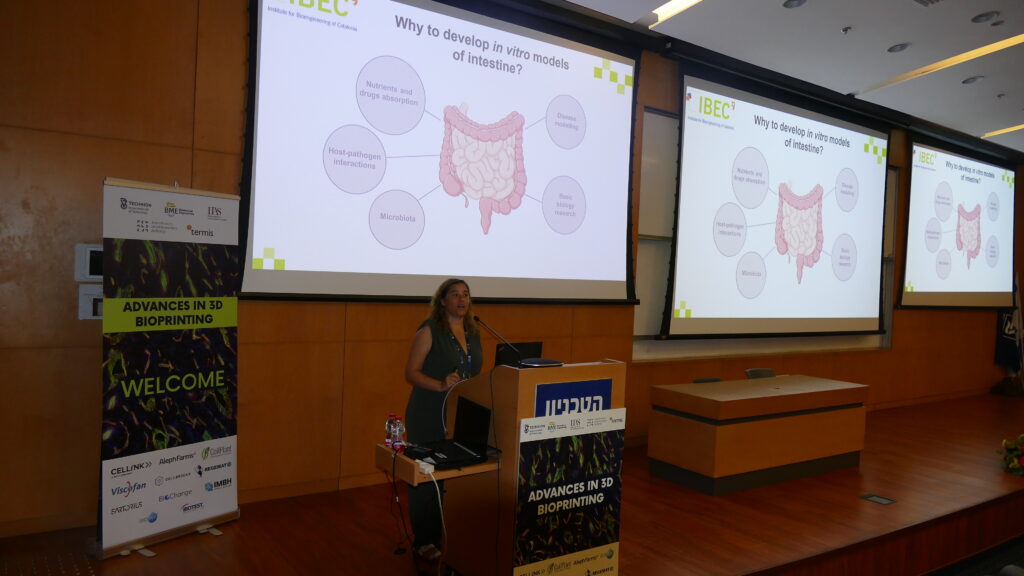
Additionally, to the invited talk, two posters + oral presentations showcased B-BRIGHTER at the conference. Aina Abad-Lázaro presented the work “A 3D model of the intestinal mucosa through light-based bioprinting combining organoids and stromal cells”, that aims to engineer an in vitro intestinal model more similar to the physiological condition, by bioprinting a villus-like 3D hydrogel with embedded stromal cells.
On the other hand, Nuria Torras was in charge of presenting the project overview, also with a poster and an oral presentation, entitled “3D Bioprinting by Light-Sheet Lithography: towards complex tissue constructs”. She highlighted the new bioprinting technology based on digital light-sheet illumination and using an original top-down lithography approach. To conclude this very successful participation, Nuria’s poster has received the conference best poster award. Congratulations!
